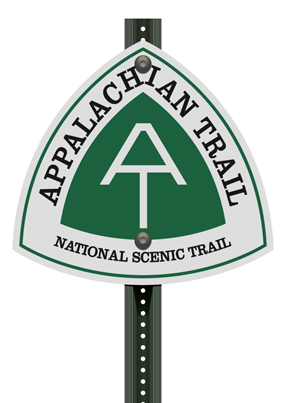
More than three million people visit the Appalachian Trail (AT) each year, but only around 3,000 of them attempt to thru-hike the entire 2,190 miles through 14 states, from Georgia to Maine. After suffering a debilitating back injury, Audrey Payne regained her strength—and herself—while thru-hiking the AT in 2018, a journey she chronicles in her new memoir. Here, Audrey Payne shares her advice for fellow adventurers eager to conquer the AT.
Q. How do you prepare physically and mentally for the trek?
A. The two biggest reasons people quit their thru-hikes are sustaining an injury and running out of money. It typically takes five to seven months to complete a thru-hike, and you should plan to spend around $1,000 a month.
To prepare physically, start with some strength training or practice hikes with a heavy backpack. Testing your gear ahead of time to ensure everything works, fits, and holds out in cold, rain, and heat will save you a lot of grief on the trail. Practice hikes also help you gauge what you really need to pack. There’s a saying that you pack your fears on your back. If you’re afraid of being cold, for example, you pack extra warm clothes.
There’s a great book, Appalachian Trials by Zach “Badger” Davis, that will help you prepare mentally. It’s all about writing down your why, understanding why you’re going out there, and having strategies in place for when you’re having bad days. There’s an expression on the trail, “Never quit on a bad day.” Davis expands on that.
Q. What options are there for charting a thru-hike?
A. You can start in Maine and go south, tackling the toughest section first. Some people “flip-flop,” starting at a midpoint and going north to Maine, then later returning to the midpoint to finish the southbound leg. The most popular route is northbound, starting in Georgia in March or April and ending in Maine. It gives you the longest hiking season, and you move with the seasons. You see the spring flowers bloom and follow the fireflies north. And you end with the most beautiful section, the White Mountains in New Hampshire and Maine. There are more people around to help you, which gives you a bigger margin for error, and more volunteers providing what’s called “trail magic,” free food or rides for thru-hikers.
Q. What do you need to consider when forming a trail family?
A. Your trail family, or tramily, is the group of fellow hikers you hike, camp, eat, and take breaks with. It’s a wonderful social experience, and you form deep bonds very quickly because you’re spending nearly your entire day, every day, with them. But not everyone’s hiking style and pace are the same. You want to get a sense early on if someone has the same vision of what they want their hike to be and has the same spending habits as you, because days spent in town can be expensive. If things don’t work out, it’s okay; you don’t have to stick with the first hikers you meet. There are always new people on the trail.
Q. What are some highlights along the AT?
A. McAfee Knob in Virginia is the most photographed spot on the trail. It’s a rock formation that juts out from a cliff; you have amazing views of the Blue Ridge Mountains and forest for as far as you can see. Annapolis Rocks, not far from Washington, DC, is the most popular camping site on the trail. The highest point is Clingman’s Dome in the Great Smoky Mountains; it’s a man-made observation tower that looks like a UFO. The lowest point is in a zoo! The trail goes right through Trailside Museum and Zoo at Bear Mountain State Park in New York State. My favorite part was the 100-Mile Wilderness, at the very northern end of the trail. The trail is super rugged there; you feel like you’re far from civilization.
Q. What did you learn about yourself on the trail?
A. The biggest lesson was that if something is calling to you, follow your instincts and do it. Find a way to make it happen.
Q. Thru-hikers take a trail name. What was yours?
A. Glowstick. On my first night on the trail, at the Springer Mountain shelter, I opened up my tent for the first time in six months and inside was a bright yellow glow stick, [that looked] as if it had just been cracked open.